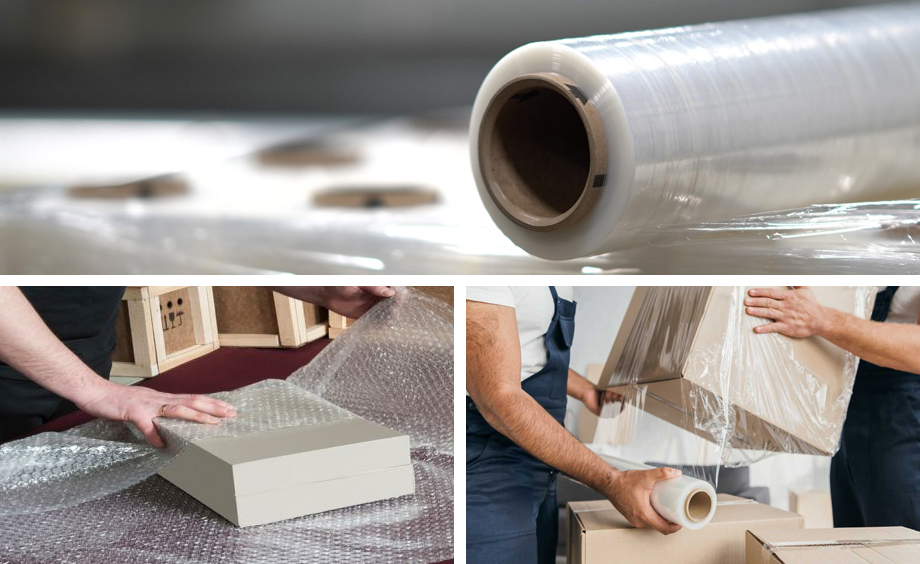- since 1985 -
- since 1985 -
Stretch film is a key packaging material used by a wide range of industries to secure and protect goods during storage and transportation. There are two main manufacturing methods in the market: cast stretch film and blown stretch film. Understanding the difference is crucial for businesses looking to invest in the right stretch film machine or assess bubble film machine market trends.
This article explores the differences, manufacturing processes, pros and cons, and applications of cast stretch film and blown stretch film to help you make an informed decision based on your packaging needs.
Process: Using a cast stretch film machine, molten polyethylene is extruded through a flat die and rapidly cooled on a cooling roller.
Features:
Uniform thickness
High transparency and gloss
Lower energy consumption during production
Common uses: With its excellent adhesion and elongation, it is ideal for automated pallet packaging.
Process: Made using a blown film extruder, the molten resin is extruded through a circular die, expanded into bubbles, and then cooled.
Features:
Slightly thicker and more durable
Higher puncture resistance
Better load retention in extreme temperatures

Common Uses: Suitable for heavy-duty applications and manual packaging that requires extra strength.
| Characteristics | Cast stretch film | Blown stretch film |
| Production method | Flat die extrusion | Blown bubble extrusion |
| Transparency | High (transparent) | Slightly hazy |
| Thickness consistency | Very uniform | Slightly variable |
| Tensile strength | Lower | Higher |
| Punch resistance | Medium | Excellent |
| Noise level | Louder noise when | Louder noise when unwinding |
| Cost-effectiveness | More economical | Slightly more expensive |
High-speed automated packaging (e.g.stretch film machines in logistics)
Applications that require transparency (retail packaging)
Cost-sensitive operations

Heavy or irregularly shaped loads
Extreme temperature conditions
Manual packaging that requires extra durability
The bubble film machine market and stretch film production industry are evolving with sustainability and automation trends:
1.Eco-friendly films: Biodegradable and recyclable stretch films are gaining popularity.
2.Automation: High-speed stretch film machine with IoT integration improve efficiency.
3.Hybrid films: Some manufacturers combine cast and blown technologies to optimize performance.
Choosing between cast film and blown film depends on your packaging needs—whether you prioritize cost, strength, or automation compatibility. Understanding these differences can help companies choose the right stretch film machine and stay competitive in the evolving bubble film machine market.
As a specialized manufacturer of bubble film and stretch film equipment, Hualiang Machinery is committed to driving innovation in the packaging industry. With over three decades of R&D and manufacturing experience, we focus on delivering end-to-end solutions for bubble film production, ensuring precision and efficiency at every stage.
Our advanced stretch film machine cater to diverse production needs, enabling clients to manufacture high-performance packaging films with superior quality and reliability.